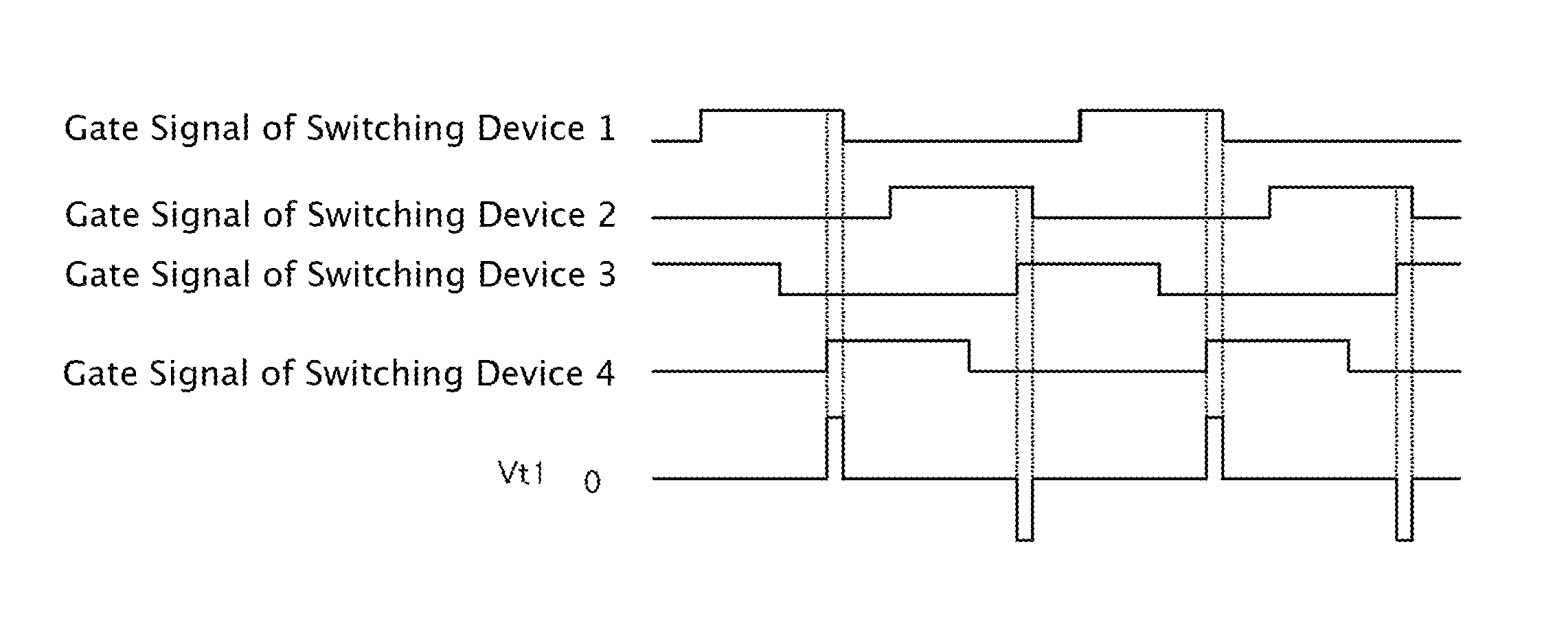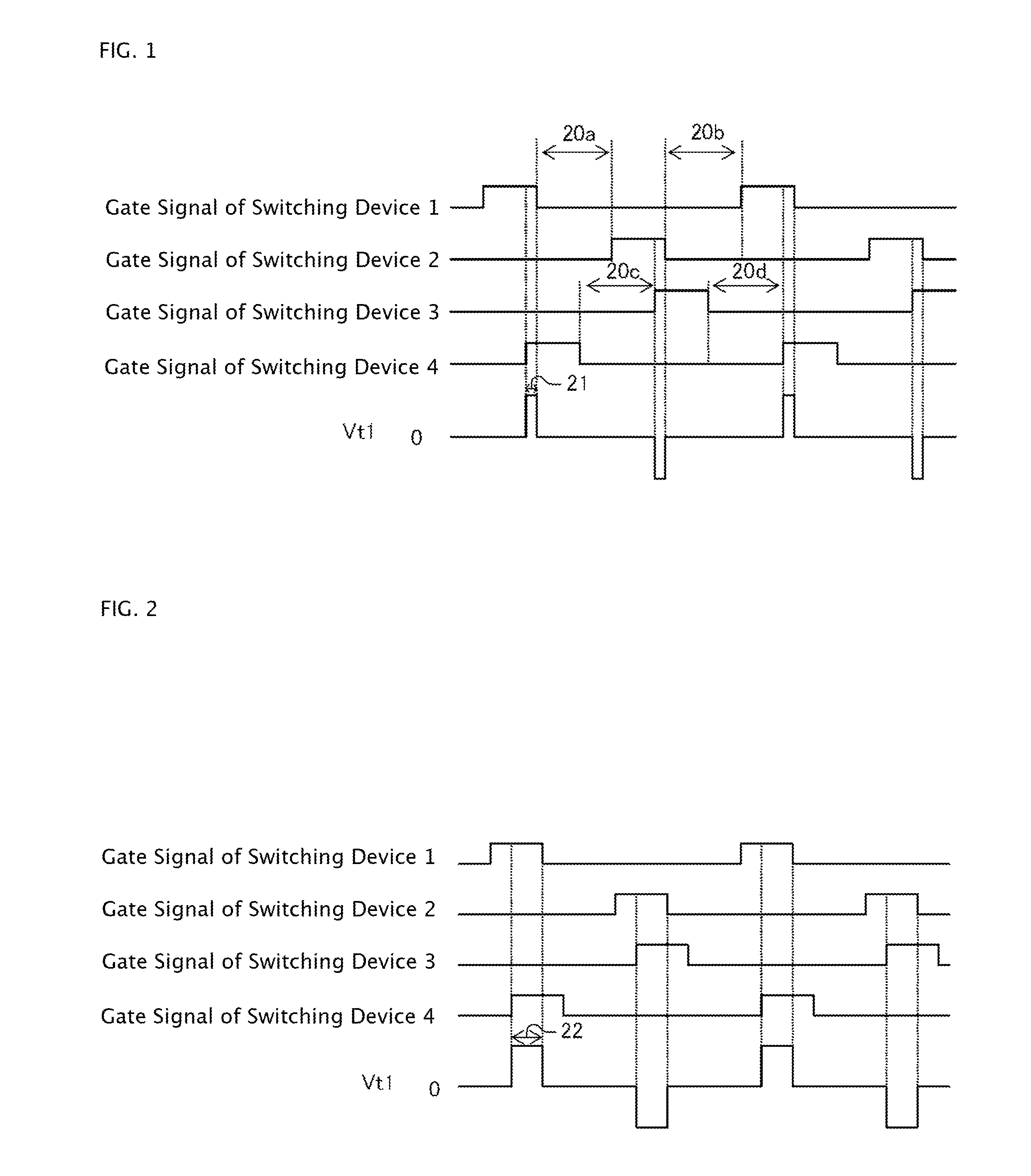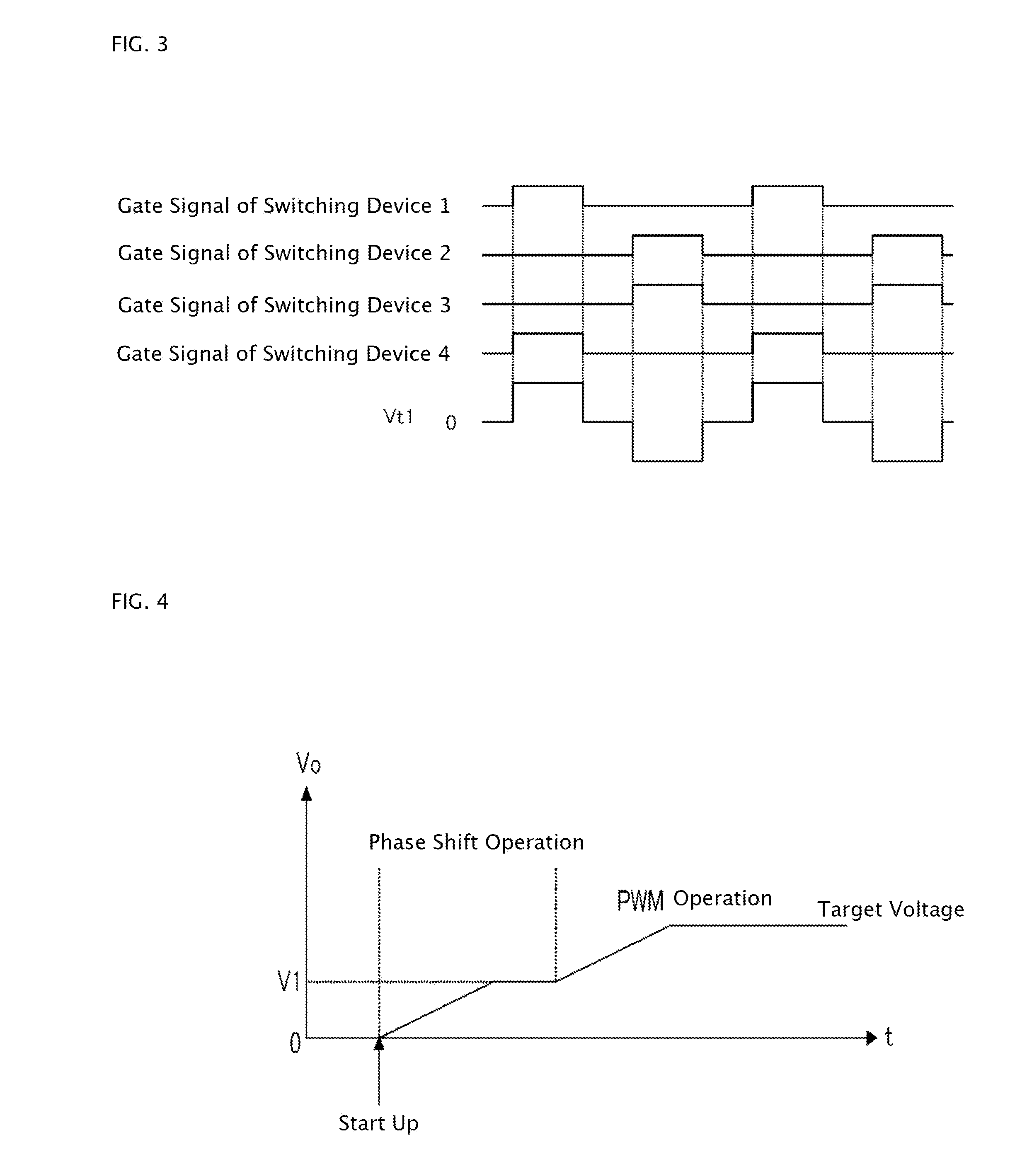Method for starting up DC-DC converter
a dc-dc converter and converter technology, applied in the direction of dc-dc conversion, power conversion systems, instruments, etc., can solve the problems of reducing the reliability of the apparatus, increasing the loss, and breaking the mosfet constituting the switching device, so as to improve the reliability of the converter, minimize or avoid malfunction, and prevent the effect of the switching devi
- Summary
- Abstract
- Description
- Claims
- Application Information
AI Technical Summary
Benefits of technology
Problems solved by technology
Method used
Image
Examples
first embodiment
[0044]a method for starting up a DC-DC converter will be described.
[0045]FIG. 1 is a chart for explaining the first embodiment of the method for starting up the DC-DC converter. FIG. 1 shows changes of gate signals applied to switching devices forming a bridge on a primary side of a transformer and a voltage value Vt1 on the primary side of the transformer when the DC-DC converter is started up.
[0046]First to fourth gate signals are applied to gates of switching devices 1 to 4 to switch on / off the switching devices respectively. Each of the switching devices 1 to 4 is turned ON when a gate signal applied thereto is H, and OFF when the gate signal is L.
[0047]The gate signal of the switching device 2 is turned on in the period when the gate signal of the switching device 1 is OFF. The gate signal of the switching device 4 is turned on in the period when the gate signal of the switching device 3 is OFF. Here is shown an example in which all the gate signals have equal pulse widths. How...
second embodiment
[0056]Next, a starting-up method will be described.
[0057]In the starting-up method according to the first embodiment, the phase of each gate signal of the switching devices 3 and 4 is shifted gradually as described above. Accordingly, when the phase has been shifted to make the phase of each gate signal of the switching devices 1 and 4 coincide with the phase of each gate signal of the switching devices 2 and 3, the output voltage Vo cannot be increased further. The starting-up method according to the second embodiment is to cope with this case.
[0058]According to the second embodiment, the phase of each gate signal of the switching devices 3 and 4 is shifted relatively to the phase of each gate signal of the switching devices 1 and 2 in the same manner as in the first embodiment, so as to increase the value of the voltage Vt1 gradually. As soon as the voltage Vt1 reaches a specific value, the phase shift operation is switched to PWM operation.
[0059]FIG. 3 is a chart showing each ga...
third embodiment
[0063]Next, a starting-up method will be described.
[0064]First, according to the third embodiment, the phases of the switching devices 3 and 4 are gradually shifted relative to the phases of the switching devices 1 and 2 so as to increase the output voltage Vo gradually in the same manner as in the first embodiment.
[0065]Description will be made on the pulse width of each gate signal at this time. The DC-DC converter is started up with each driving signal whose pulse width is large enough to increase the output voltage Vo to the target voltage or higher in the phase shift operation as shown in FIG. 5. The phases of the gate signals of the switching devices 3 and 4 are shifted relatively to the phases of the gate signals of the switching devices 1 and 2 in the same manner as in the first embodiment. Thus, the pulse width of the voltage Vt1 on the primary side of the transformer 9 is increased gradually to increase the output voltage Vo as shown in FIG. 6. However, the pulse width of...
PUM
 Login to View More
Login to View More Abstract
Description
Claims
Application Information
 Login to View More
Login to View More - R&D Engineer
- R&D Manager
- IP Professional
- Industry Leading Data Capabilities
- Powerful AI technology
- Patent DNA Extraction
Browse by: Latest US Patents, China's latest patents, Technical Efficacy Thesaurus, Application Domain, Technology Topic, Popular Technical Reports.
© 2024 PatSnap. All rights reserved.Legal|Privacy policy|Modern Slavery Act Transparency Statement|Sitemap|About US| Contact US: help@patsnap.com










